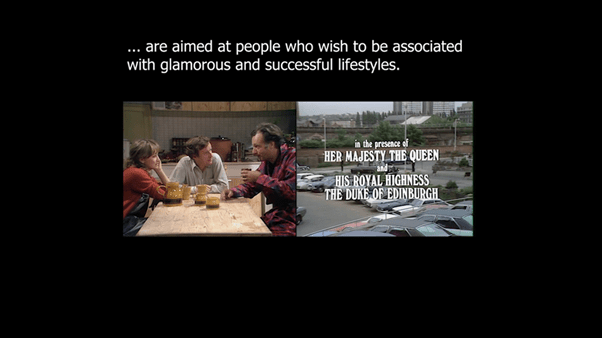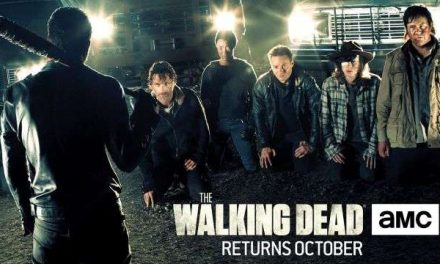Creating the video essay on The Good Life for the TV Dictionary – the entry was “see under lifestyle(s)” – was enjoyable. The hardest part was figuring out how to condense so much visually-arresting and often humorous material into a short space of time. Well, that and the way in which the nostalgic pleasures of rewatching this iconic show from the 1970s were often tempered by the realization of the nature of some of the content. Hindsight brought this into sharper focus than the lived experience of the times had always enabled. Still, it was enjoyable overall.
cstonline.netvimeo.com/726426035
Most people who have been kind enough to provide informal feedback on the video essay have all noted the same thing: that they got a little lost in the middle section. “What was that middle bit all about? I got a bit lost there.” This is, of course, a very diplomatic way of saying that I lost them there. The meaning of the video essay became obscure.
I thought this blog post might be a chance to explain things a touch more clearly in writing.
Specifically, the moment which loses people is almost exactly the middle of the video essay, where there is a split screen juxtaposing The Good Life (a kitchen table conversation in which Jerry [Paul Eddington] is holding forth) and footage of a special “Royal Performance” of the show at the BBC, attended by Queen Elizabeth II. This latter is footage taken from the DVD extras.
This section of the video essay indicates how The Good Life resonates with the dictionary definition of lifestyle as an adjective: “lifestyle magazines, television programmes, and products are aimed at people who wish to be associated with glamorous and successful lifestyles.” I thought the split screen enabled an insight into how the content of The Good Life was quite close to certain realities which surrounded its production. Jerry is explaining about celebrity, and the ability of same to garner “goodies“ in exchange for the use of said celebrity (their image, or name more precisely). This is juxtaposed in split screen with the arrival of royalty at BBC Television Centre, for a performance which – the voiceover informs – has been organised to raise funding for an appeal seeking to help finance the sending of British teams to the Commonwealth Games.
This seemed to me to be an interesting, or perhaps even ironic juxtaposition. Namely, that the process being critiqued, or at any rate undercut for laughs in The Good Life itself – in the episode Jerry’s scheme humorously backfires, naturally – was the very same one which the show was itself used for in “real life”: the celebrity soft power of the British royal family, coupled with that of the household names of the cast of The Good Life being used as a springboard to aid in the raising of money for national athletic endeavours abroad. The split screen was intended, then, to advance the definition a little beyond the content to also include the context.
What caused this issue around comprehension?
It seems highly unlikely that it was the split screen itself. After all, it is a very common phenomenon in video essays. For example, in the video essay on The Good Life, split screen proved essential in encapsulating something of the entire series over its lifetime, rather than using a single clip from one episode. This was something I had already explored in two previous video essays, not for the TV Dictionary, on the television show Columbo.
Moreover, in the The Good Life video essay I used split screen as part of a very tentative exploration of the formal possibilities of the dictionary entry, a process I took further in another entry on a different 1970s show, Battle of the Planets.
cstonline.netvimeo.com/738062833
Here I used not only split screen, but also flashback and mismatched sound and image to indicate the underlying debt of this US show to the Japanese original, Kagaku Ninjatai Gatchaman, which it reworked. In particular, split screen enabled this video essay to include something of the various different language versions that were made for other territories from the same Japanese original.
None of this split screen work caused the same confusion that the inclusion of work from the DVD extras did on the The Good Life video essay.
If this is clearly not a split screen issue, what does cause the problem?
It would seem that incorporating footage from the DVD extras was perhaps not successful because we may tend to prefer audiovisual dictionary entries to be uncluttered of such context. As per the helpful format guidelines, typically the focus remains the television show itself, so it is perhaps unsurprising that this additional footage created unnecessary confusion.
This would make sense in general, as overall one apparent difference between the video essay format and the traditional written scholarly output would be that the former eschews context relative to the latter (video essays are not required to conduct extensive literature review, say, nor to ground hermeneutical work in context necessarily, at least not in the way which is more typical if not essential to the written work). That is not to say that this never happens in video essays, but rather, that the video essay format often expresses itself beautifully via a rather different set of approaches.
This may mean, however, that instances like this one, with the use of footage from the DVD extras, prove to be less engaging and less successful in making a point than keeping focus racked firmly on the original television show.
A hidden gem from the TV Dictionary which I recommend is Shetland by Lucy Fife Donaldson. It captures the show, and the location, in very compelling ways:
cstonline.netvimeo.com/852952818
David Martin-Jones is Professor of Film Studies, University of Glasgow, UK. His specialism is film-philosophy, and his research engages with world cinemas. He is the author/editor of ten books, including Columbo: Paying Attention 24/7 (which was shortlisted for the MeCCSA Best Monograph Award). He is an amateur dabbler in videoessays, his brief forays to date available on Vimeo here.





